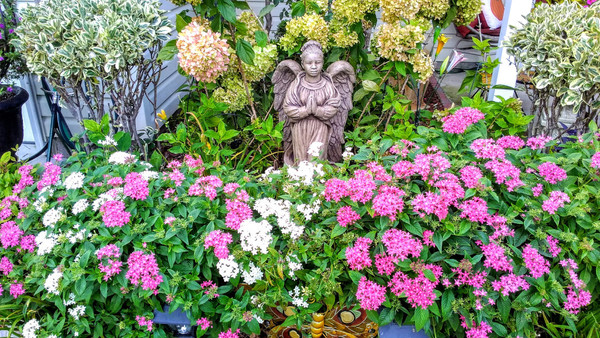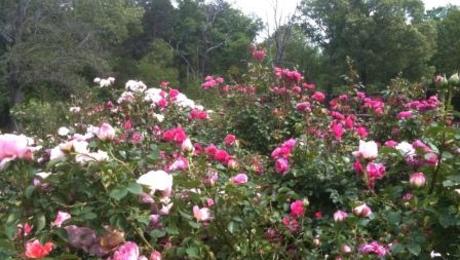First, grab your secateurs and check the bushes for dead or weak growth. This is a good time to get rid of it so the plant can focus its energy on healthy growth and hardening off any new canes that popped up in late spring or over the summer. This isn’t a hard prune, it’s just a light grooming to clean them up.
Check your mulch levels. If it’s looking a little light in spots go ahead and top it off where needed. And if quite a bit of the mulch you laid down in spring is gone give yourself a pat on the back. That means you have that living soil profile we talk so much about and the mulch is breaking down. All those little microorganisms in your soil are happily munching away and doing a lot of work for you!
If your mulch isn’t breaking down don’t worry about it now. Come spring, if it hasn’t broken down much, that is the time to add compost and/or try another liquid drench to add microorganisms. I put mine down late and it’s still pretty thick, but I know from experience come spring most of it will be gone. It’s takes time to build up that living soil profile.

Photo/Illustration: Paul Zimmerman Roses
If you are so inclined, find a good seaweed based liquid fertilizer you can apply through one of those hose end sprayers that allows you to dial the amount per gallon you want to use. I find seaweed based fertilizers and roses are a great combination. It really boosts the foliage and I feel it helps with disease resistance. Put some on now and then again in a few weeks. That will get you right into fall and boost the flowering.
Personally, I’m finally adding perennials to my main rose bed. I’ve been wanting to do this for a while but every year it just never happened. This year I made a focused effort and found a great local source for plants. I buy them as small plants because it’s less expensive and I need so many. With the rich soil I’ve built up over the years they grow quickly!

The other benefit of the perennials is they will continue to help attract beneficial insects to my garden. And more importantly than attract is keep them here. Couple that with making the garden more beautiful means I’m getting a lot of bang for my buck!
Fall in the rose garden can be every bit as beautiful as spring. With a little focused work now we help our roses look their best at that time of year.
Happy Roseing
Paul
Fine Gardening Recommended Products

A.M. Leonard Deluxe Soil Knife & Leather Sheath Combo
Fine Gardening receives a commission for items purchased through links on this site, including Amazon Associates and other affiliate advertising programs.


















Comments
-> < Start making some fast funds with your paypal while working online at home... Check it out >
Thank you for this interesting article about roses. I have to try seaweed with roses as well. It was recommended to me in one of the rose nurseries. I also like mixing perennials with roses. In our garden we have several geraniums, lavenders, butterfly bushes, Russian sage, lilies and some other plants. They are doing well growing between or behind roses.
Log in or create an account to post a comment.
Sign up Log in